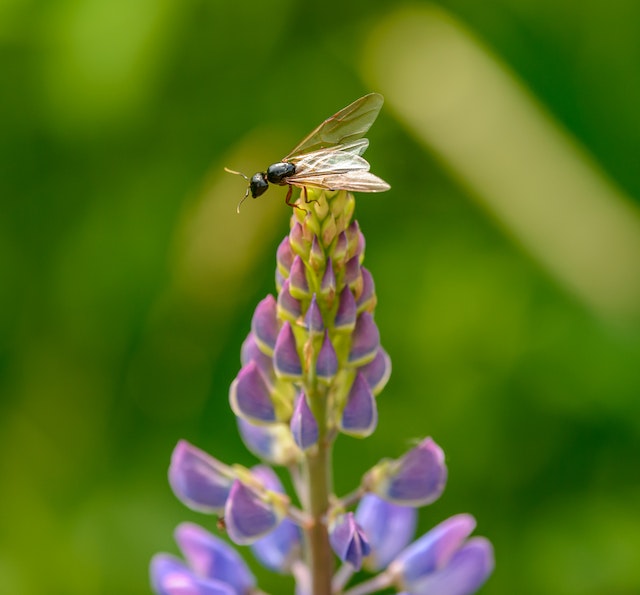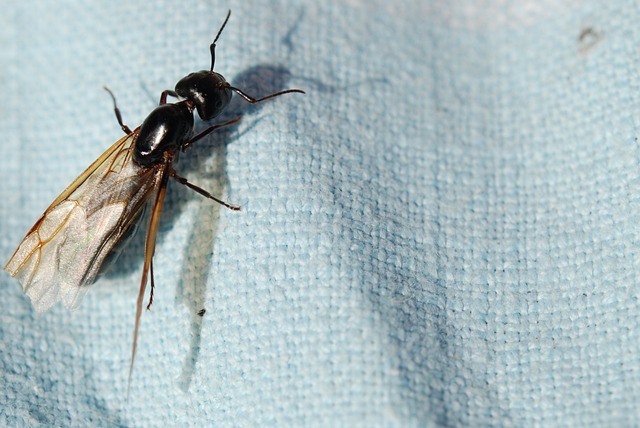
Are you spotting ants flitting around your home? Beware, as you might be witnessing a pivotal event in the life of ants – the emergence of ant alates. These winged reproductive ants venture out from their parent colonies to start new ones, creating potential challenges for Raleigh homeowners in the long run.
In this blog, we’ll learn more about an ant alate, shedding light on its role in ant colonies and how it can become bothersome pests. Join us as we explore the life cycle of these airborne invaders and provide valuable insights on effectively eliminating them from your North Carolina property.
Caste Roles in an Ant Colony
Ant colonies are complex societies with a hierarchical structure, and different types of ants, known as castes, fulfill specific roles within the colony. Each caste has unique physical characteristics, behavior, and responsibilities. Let’s discuss the primary types of ants found in a colony:
Worker Ants:
Worker ants are the backbone of the colony. They are typically sterile female ants and form the largest group in the colony. Worker ants are responsible for various tasks, including foraging for food, caring for the queen and her brood, maintaining and expanding the nest, and defending the colony from potential threats. Their duties change as they age, with younger workers often performing tasks within the nest and older workers venturing outside for more hazardous assignments.
Soldier Ants:
Soldier ants are specialized workers with larger and more powerful mandibles or jaws. Their primary role is to protect the colony from external threats, such as predators or invading ants from rival colonies. Soldier ants may also participate in nest defense against other insects or animals that pose a danger to the colony.
Queen Ant:
The queen is the reproductive powerhouse of the colony. She is significantly larger than other ants and is responsible for laying eggs to ensure the colony’s continuity. The queen emits pheromones that maintain social order and cohesion. Throughout her life, the queen can produce thousands to millions of offspring, including worker ants, soldier ants, and new reproductive ants.
Male Ants (Alates):
As mentioned, male ants, known as alates or reproductive ants, are produced for mating. Their role is short-lived, and their main task is to participate in the nuptial flight, where they mate with female alates from other colonies. After mating, the male alates die, and their genetic material is disseminated to different colonies, promoting genetic diversity within the ant population.
Reproductive Female Ants (Alates):
Female alates are potential future queens. After successfully mating with male alates, they shed their wings and search for a suitable location to start a new colony. Once they find the right nesting site, they become founding queens and begin laying eggs to initiate their own colonies.
All About Ant Alates
Ant alates represent a critical phase in the reproductive cycle of ant colonies. These winged individuals emerge during specific periods, engaging in nuptial flights to mate and establish new colonies. However, from the viewpoint of pest management, these events can be challenging for property owners and pose potential threats.
During the nuptial flight, male ant alates take to the air from other colonies with female ant alates, While this natural behavior is essential for genetic diversity within ant populations, it can also lead to swarming and infestations in residential and commercial areas. When large numbers of winged ants gather, they may become a nuisance for people, obstructing outdoor activities and causing distress.
Once successfully mated, female ant alates discard their wings and seek suitable nesting sites, including gaps in building structures or landscaped areas near human habitation. If they find their way indoors, they can establish new colonies within walls or crevices, leading to potential long-term ant infestations.
Implementing effective pest control measures is key to minimizing the chances of nuptial flights occurring near residential or commercial properties. Routine inspections and sealing potential entry points go a long way in reducing the risks of ants establishing new colonies indoors.
Swiftly addressing ant infestations through professional pest control services is vital. By identifying and treating ant colonies early on, we can prevent them from gaining a foothold and causing extensive damage to buildings or landscapes.
Should You Worry About Ant Alate Damage?
Ant alates themselves do not cause damage. Their primary purpose is to disperse and mate, ensuring the continuation of the ant species and promoting genetic diversity.

Although ant alates do not cause direct damage, successful mating and establishing new colonies can lead to potential issues.
Ant infestations pose significant problems in both households and commercial settings. Depending on the ant species, they may invade kitchens, pantries, and other areas for food. Some ant species can even damage property by nesting in or around buildings, leading to structural issues that need addressing.
Addressing ant infestations promptly is crucial to prevent them from gaining a foothold and causing substantial damage. Implementing effective pest control measures can help manage ant populations and prevent them from becoming a nuisance in residential and commercial spaces.
To stay ahead of ant-related troubles, regular inspections, identification, and sealing of potential entry points are key. Seeking professional pest control services when needed further ensures that any ant infestations are handled promptly and effectively, minimizing the potential damage or inconvenience they may cause.
At Innovative Pest Solutions, we take pride in providing proactive pest control solutions to safeguard your Raleigh, North Carolina, property from ant infestations. Contact us today to keep your living and working spaces free from these unwelcome intruders!





